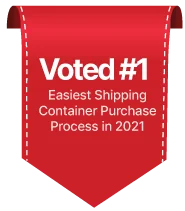Introduction
When you think about the costs of shipping containers, you probably think about several things: supply shortage, availability of a container in a particular area, and the size of the box. But these factors don’t make up the entire picture. You need to consider many other factors as well. Listed below are some of them:
Coronavirus outbreak
Despite the recent announcements by the Chinese government to increase bunker prices to counter the effects of the recent coronavirus outbreak, shipping costs remain high. The prices of bunker are closely linked to the price of crude oil, and the recent outbreak has seen crude prices drop. Still, bunker prices are falling more slowly than crude prices. The outbreak coincided with the implementation of IMO 2020 and the Phase One trade deal between the United States and China. Chinese officials have said that purchases of containers from these areas will be contingent on market conditions.
A lack of containers has affected the supply chain in several ways. A shortage of containers slowed major trades from Asia, causing delays of weeks. In addition, COVID and weather conditions have made shipping a logistical nightmare. One ocean carrier told one company that it would cost $32,000 to ship a standard container from Shanghai to Los Angeles. And while that may sound expensive, that price could be far lower than the costs involved in shipping a standard container.
The effects of the coronavirus outbreak on shipping prices have been felt worldwide. Most affected segments include the cruise industry and the car carrier industry. But the container market is still recovering despite the disruption. In addition to rising demand and shortages of supplies, the coronavirus outbreak has boosted freight rates worldwide. According to the United Nations Conference on Trade and Development, freight rates between Asia and the east coast of North America rose 443% and 63%, respectively.
In 2022, the Omicron variant of the coronavirus is expected to continue to cause widespread outbreaks. But the virus will linger until the end of the century, according to shipping industry insiders. And because the shipments are so high, this could continue until 2023, with a potential increase in rates. With a high-risk of an outbreak, shipping companies have prioritized routes with higher freight rates.
Supply shortage
The sudden increase in container demand has created a global supply shortage. A few months ago, when the Covid virus hit Asia, major shipping lines canceled dozens of sailings to Europe. Those empty boxes didn’t get picked up until the export sector in China reacted and began to bounce back.
Now, the container shortage is persisting as the coronavirus ban continues and China sends more goods to the U.S. and Europe. Because of this, shipping companies are redirecting as many containers to Asia as possible. This situation is also causing prices to rise.
The supply shortage is putting pressure on global trade chains. Rising freight costs will drive up prices for consumer goods. A shortage of shipping containers is directly related to global economic inflation. If the shortage continues, the price of goods will rise as well. This is not a good sign for the global economy. If supply issues are caused by demand, it will ultimately lead to higher inflation. However, there are ways to alleviate the situation.
Experts in the shipping container industry aren’t sure when prices will go down. But they do agree that the supply shortage will not be resolved anytime soon. Perhaps a respite will occur around Chinese New Year in February 2022. China will likely shut down its factories during the holiday, slowing the pace of exports. However, given current conditions, that is not likely to happen. So, when will the supply of shipping containers return to normal?
New shipping container production may alleviate the problem in the near term, but it won’t solve the container shortage anytime soon. There isn’t enough supply to meet the demand for new containers for another year. Also, the increase in production won’t solve the issue of the bottleneck at the ports or in inland transportation. The future of container prices depends on whether the price of consumer goods falls sharply.
Size of box
If you’re wondering why shipping containers are so expensive, there are a number of factors involved. The first, and most obvious, reason is the size of the container itself. If you want to move a large container from Asia to the U.S., you’ll need to hire an international shipping company.
Shipping a single container from Asia can cost $7,000, and even more if it’s full of valuable items. Another reason is the shortage of shipping containers.
The second factor is the size. Shipping containers are so large, that a single unit can hold about a million cubic feet of cargo. When loaded, shipping containers are approximately 40 feet long. This allows them to be used in a variety of ways, from makeshift classrooms and clinics to high-end modular homes. The price of shipping containers may seem high, but they’re worth it when you consider the benefits.
The third factor is location. Some suppliers charge more for shipping containers to remote locations, making it necessary to compare prices before choosing a supplier. Moreover, shipping container prices depend on how many containers you’ll need and how far you’re from the port. The further from the port, the higher the shipping container price will be. Get a delivery quote and try to find a company that charges flat fees.
Lastly, the size of shipping container is another factor. When a shipping container is too small, it can become difficult to transport it. But before the container arrived, companies could rent 20 or 40-foot boxes for a single day. In addition to being affordable, shipping containers also have a long lifespan, which makes them almost indispensable to the global economy. A 40-foot box costs about $2,000 for a single shipment.
Availability of container in a specific location
A shortage of containers is an important factor in container pricing. While Asia’s container shortage affected cargoes in the West, many European nations suffered the same problem. The shortage led many shipping lines to decline outbound bookings for premium-rated empty containers and de-stressed the supply chain by switching to air freight. However, container vessels still carry about 90% of non-bulk cargoes. Rising costs for raw materials such as corrosion-resistant steel and labor are affecting container manufacturers.
Despite this, some companies have already started looking for alternative shipping routes. One example is shipping from Shanghai to LA or Melbourne. However, this route will cost 66 cents per 40-foot container. In other words, the cost of shipping containers is higher because there is less competition. But this situation is temporary and will return to normal after a few weeks.
Therefore, container prices could fall significantly in some locations and may help reduce travel times.
Where you are located and how easily it is to reach it plays a role in the cost of shipping containers. Some suppliers charge more than the cost of the container itself if it has to be delivered to an unreachable location. Furthermore, the longer a shipping container has to travel, the higher the cost. The best way to avoid this is to find a shipping container supplier that offers a flat rate for delivery.
The availability of shipping containers in a particular location determines the cost. In China, for example, there are now over 180 million containers available in the country. In addition, China has experienced a large trade surplus, and orders for new containers were largely canceled during the first half of last year.
With all of these delays, container capacity will decrease. This means that shipping companies need to make a significant profit if they want to remain competitive.
Increase in price with size of box
When considering the cost of shipping a shipping container, consider the size and location of your shipment. A small shipping container is usually cheaper than a large one, and it is also more portable. If you are moving from one location to another, make sure to get a container that will be transported to your new location.
Depending on the size of your shipping container, it can cost as much as $85,000 or more.
When choosing a shipping container, consider how many doors you need. A standard shipping container will have a door at one end. A double-door shipping container will have doors on both ends. A specialty container may have a door on one end and open sides.
A shipping container with more doors costs more, and you may want to consider the open top option if you’re just shipping bulk items. The bottom line is that the cost will depend on the number of containers you need and the distance to the port. For example, in Phoenix, AZ, shipping containers may cost more since they are further away from a port compared to San Diego where they are close to a port.
While shipping prices increase with size, the cost of a 40-foot container can be as low as $8000. The price of a 40-foot container is approximately 20%-30% more expensive than a 20-foot container. Customization options are available for an even greater increase in price. When choosing a container, consider the size of the shipment and the condition of the container. You may want to consider purchasing the goods locally or from a U.S. manufacturer to avoid paying higher shipping costs.
Shipping container prices vary greatly by state. Prices range from yellow to gray. The yellow containers are the cheapest and the gray ones are more expensive. The price will also depend on the size of your shipping container, state, and location. While shipping containers can be inexpensive, the prices will increase dramatically if you choose to build your home out of them. For example, if you’re moving from one state to another, you’ll pay much more than if you were to move a full-size house from one to four states.






 147 People have requested shipping container pricing this week through TheShip
147 People have requested shipping container pricing this week through TheShip